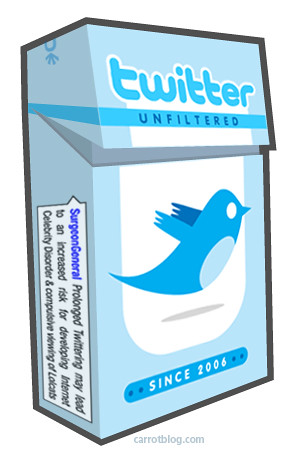 Getting straight into it, a lot of SEO and Internet Marketing Specialists – including myself – have been using Content Management Software applications for some time now and, let’s face it, in practice, it’s not the Promised Land textbooks praise it to be.
Getting straight into it, a lot of SEO and Internet Marketing Specialists – including myself – have been using Content Management Software applications for some time now and, let’s face it, in practice, it’s not the Promised Land textbooks praise it to be.
In most cases, implementing a CMS isn’t as much the Marketer’s idea, as it is forced down our throats by copywriters, translators, or any other professionals dealing with large masses of text. Now admittedly, it does lighten these guys’ workload. However, I came to the conclusion that a CMS serves SEO and Usability purposes, about as much as Paris Hilton serves world culture.
Any CMS package just takes too damn long to load anything. It injects a gigantic databases into your website – a database comprised of the Software’s applications, style sheets, functions and the content itself – and generates a large lag, forcing any page to open 5-10 times slower than it usually would. There is no way around this, as most professional CMS platforms simply store all style sheets and scripts are locally, instead of uploading them on external hosts. Furthermore, the CMS also adds a blob of a code to any page and calls it up before the content itself, upon refreshing the page. Apart from that, the system also usually messes with page names and metas automatically, when you update any old content, thus rendering any real-person content management effort obsolete.
The above mentioned little impediments have determined me to look for alternative methods of managing content. My quest has brought me no further than Social Publishing systems. Now these platforms still have a long way to go, but I think the industry is rapidly growing and, as opposed to conventional CMS packages, they are open source and can be naturally embedded on any page, without them eating up precious kB space.
I have already tried Scribd, Issuu and Wetpaint...
Issu I have been slightly unimpressed by, as it does have some small issues – pardon the pun – with displaying Document Archives and Related Documents and some pretty heavy issues with hyperlink management. Besides, your documents will be loaded with previews of other files totally unrelated to you, which sometimes might provide a small benefit, in terms of visibility, but it does make your work look unprofessional and it distracts the attention of anyone reading your work. Plus, you files risk being associated with dubious content, as the platform is free to use for anyone on the WWW.
Wetpaint really made the grade, in my opinion, as it handles hyperlinks, ads and content pretty well and it offers a pretty neat sign-on integration system. On the minus side, the platform pretty much begs for user-generated content, so, if you’re not going for that sort of mechanism for your website, Wetpaint won’t be the best choice for you.
Scribd is the champion of this lineup. It is highly user-friendly, very versatile and the experience is customizable. It also features two interesting applications, namely iPaper, allowing you to embed documents into webpages and a very own API, usually employed to juice third-party applications, such as Acamin – which also uses Scribd’s iPaper system for sharing files on Facebook, LinkedIn and Twitter. Scribd gets my vote as a very classy substitute for traditional CMS platforms.

![[Ask]](https://seo-wolf.com/wp-content/plugins/bookmarkify/ask.png)
![[del.icio.us]](https://seo-wolf.com/wp-content/plugins/bookmarkify/delicious.png)
![[Digg]](https://seo-wolf.com/wp-content/plugins/bookmarkify/digg.png)
![[Facebook]](https://seo-wolf.com/wp-content/plugins/bookmarkify/facebook.png)
![[Google]](https://seo-wolf.com/wp-content/plugins/bookmarkify/google.png)
![[LinkedIn]](https://seo-wolf.com/wp-content/plugins/bookmarkify/linkedin.png)
![[Mister Wong]](https://seo-wolf.com/wp-content/plugins/bookmarkify/misterwong.png)
![[Reddit]](https://seo-wolf.com/wp-content/plugins/bookmarkify/reddit.png)
![[Squidoo]](https://seo-wolf.com/wp-content/plugins/bookmarkify/squidoo.png)
![[StumbleUpon]](https://seo-wolf.com/wp-content/plugins/bookmarkify/stumbleupon.png)
![[Twitter]](https://seo-wolf.com/wp-content/plugins/bookmarkify/twitter.png)
![[Yahoo!]](https://seo-wolf.com/wp-content/plugins/bookmarkify/yahoo.png)
![[Email]](https://seo-wolf.com/wp-content/plugins/bookmarkify/email.png)



